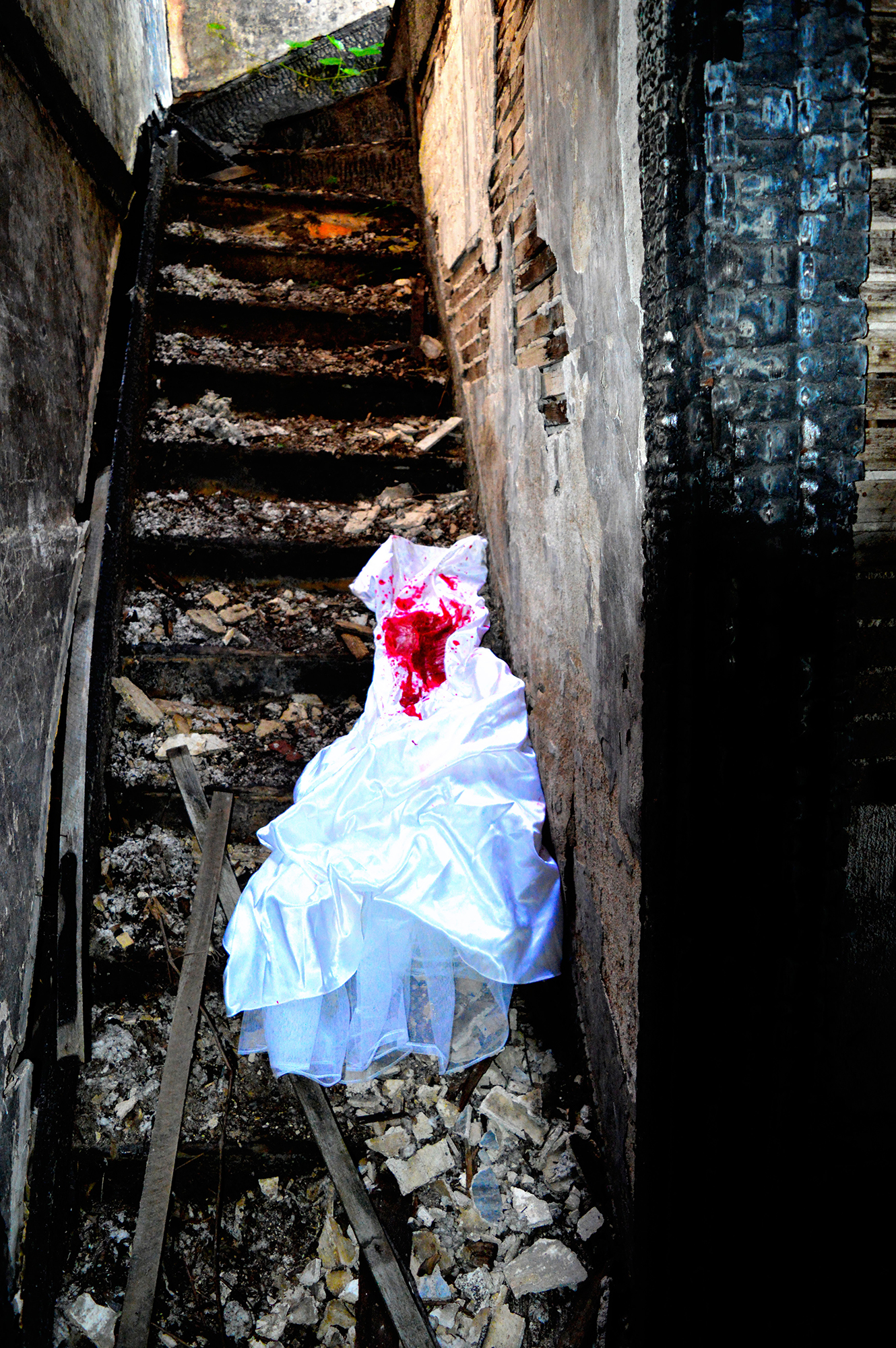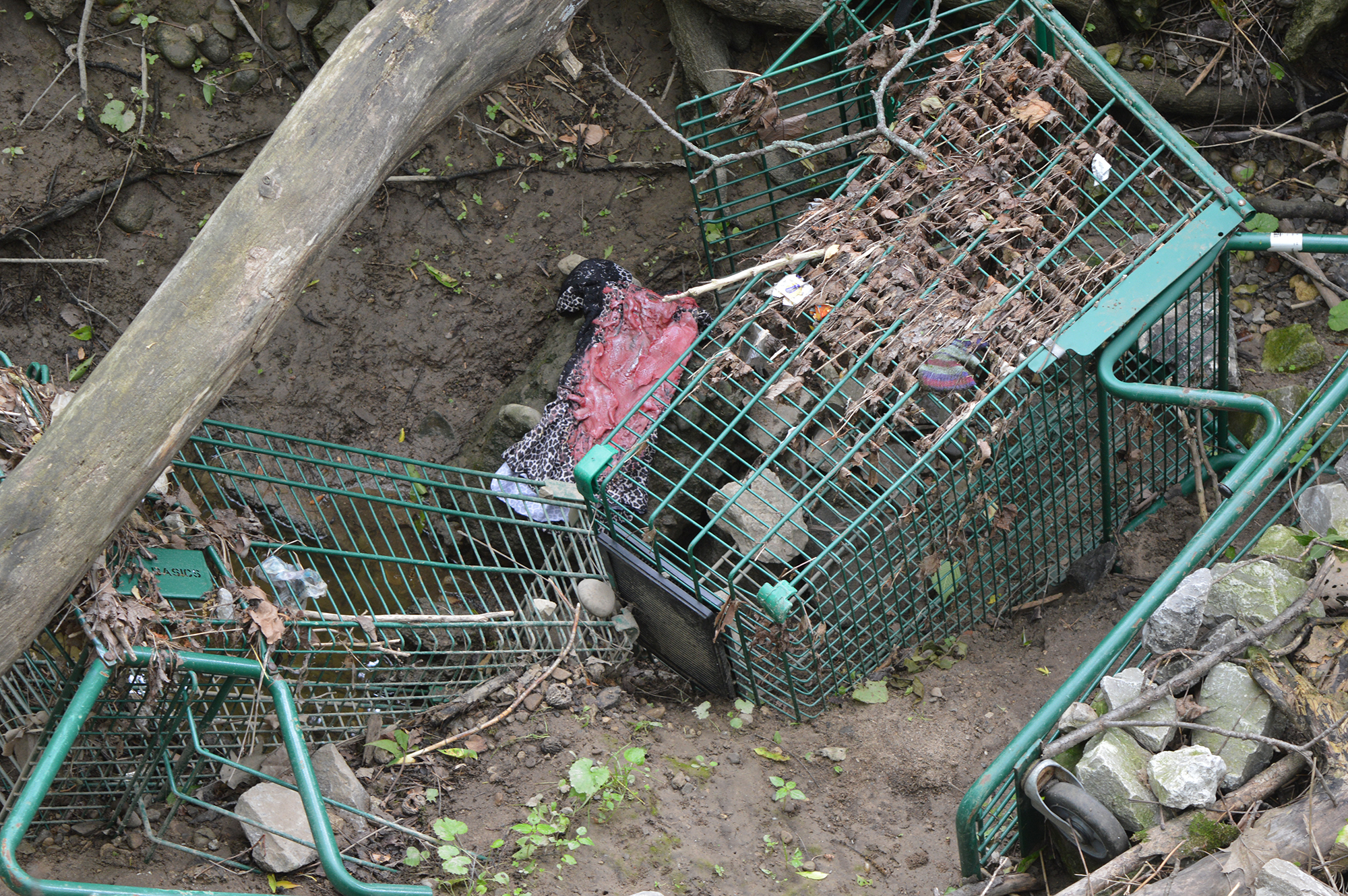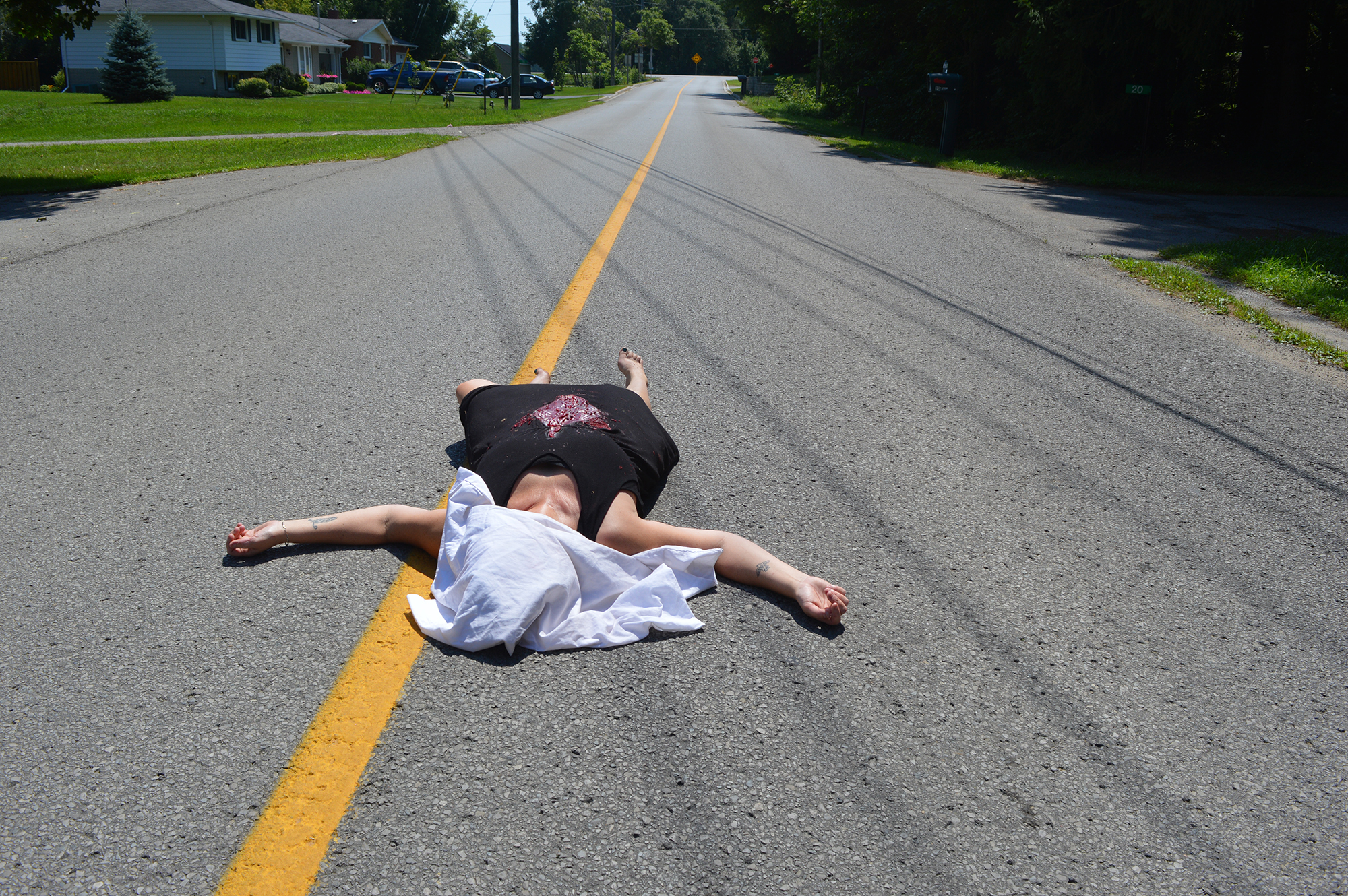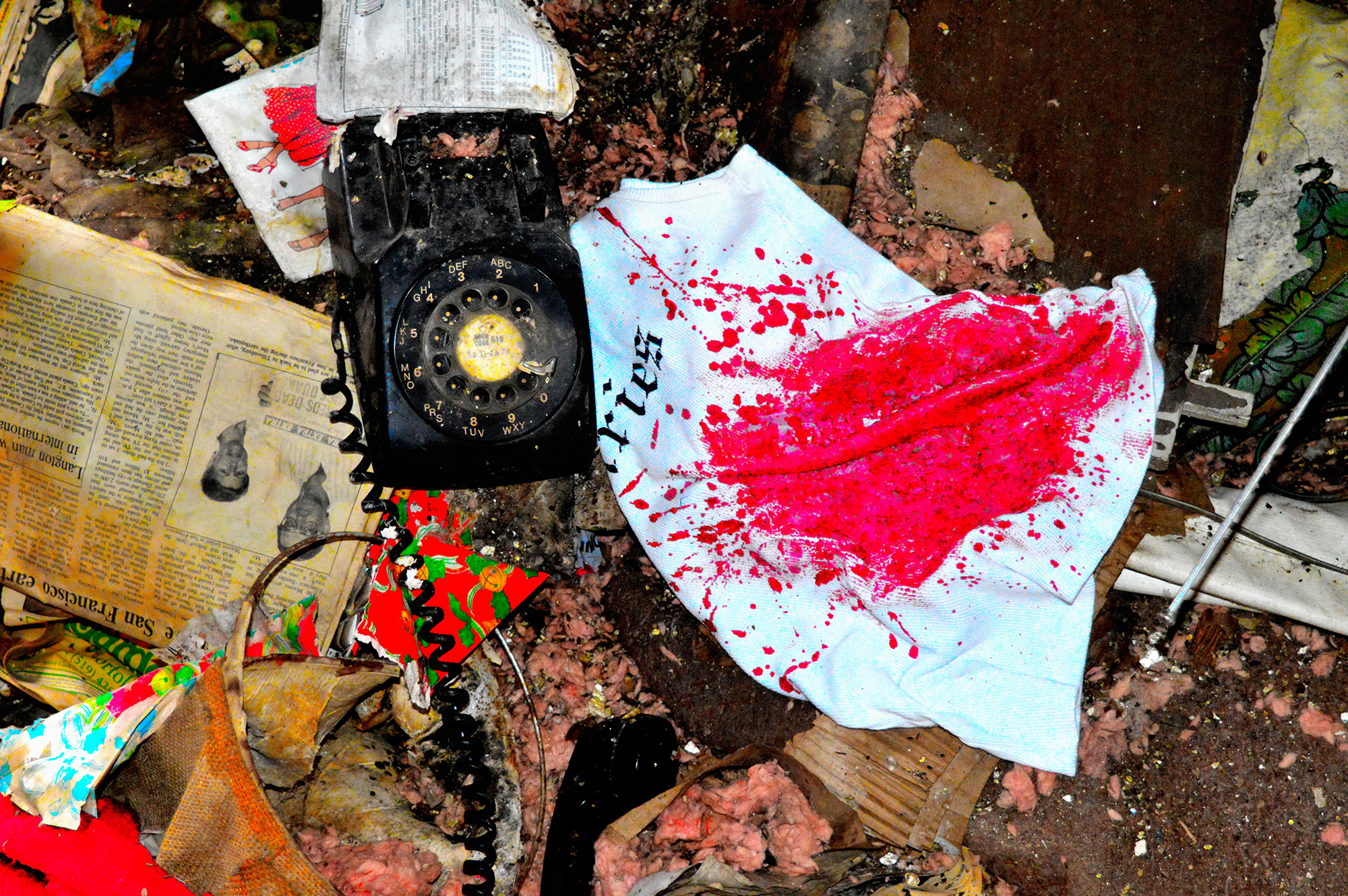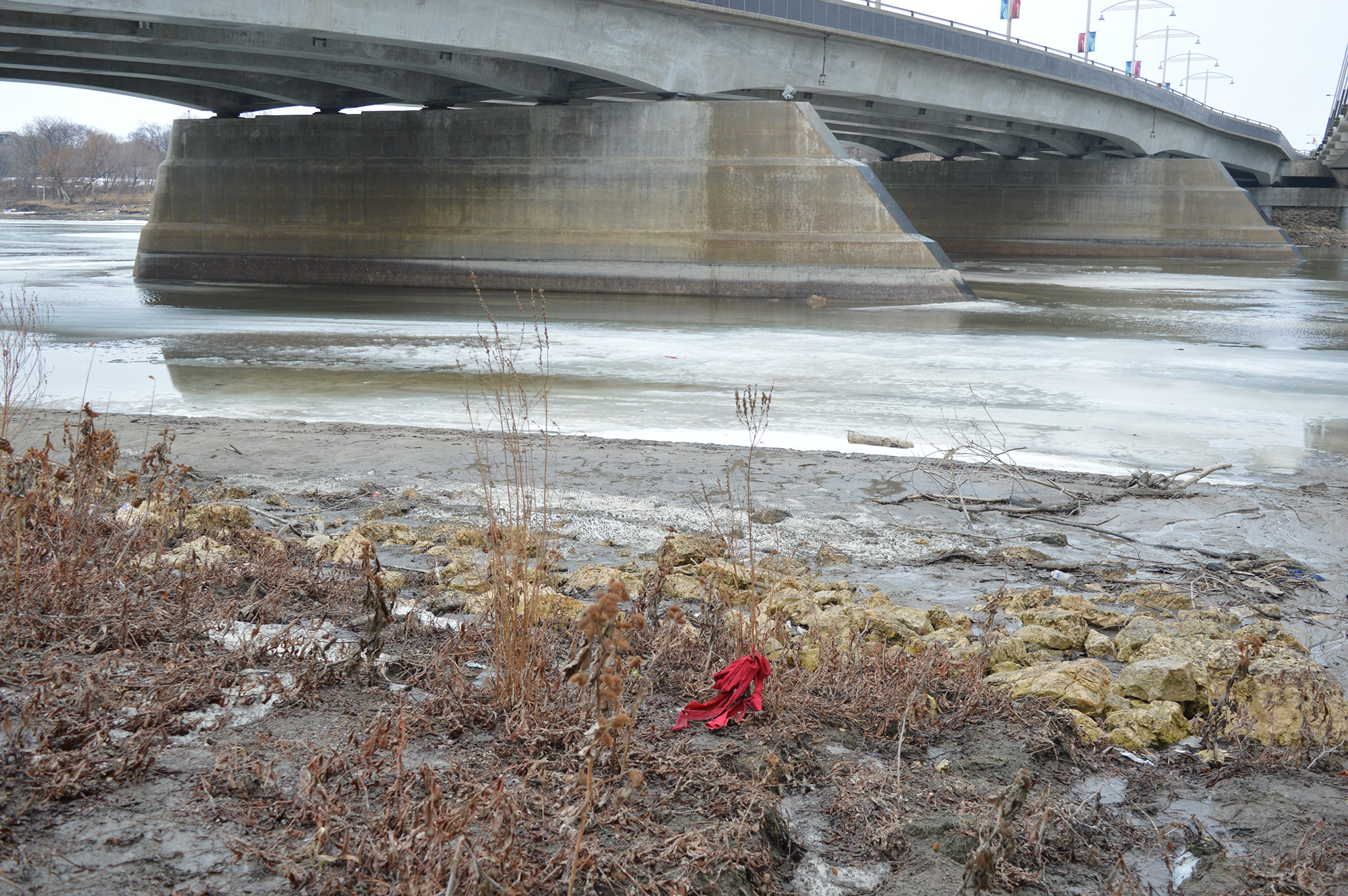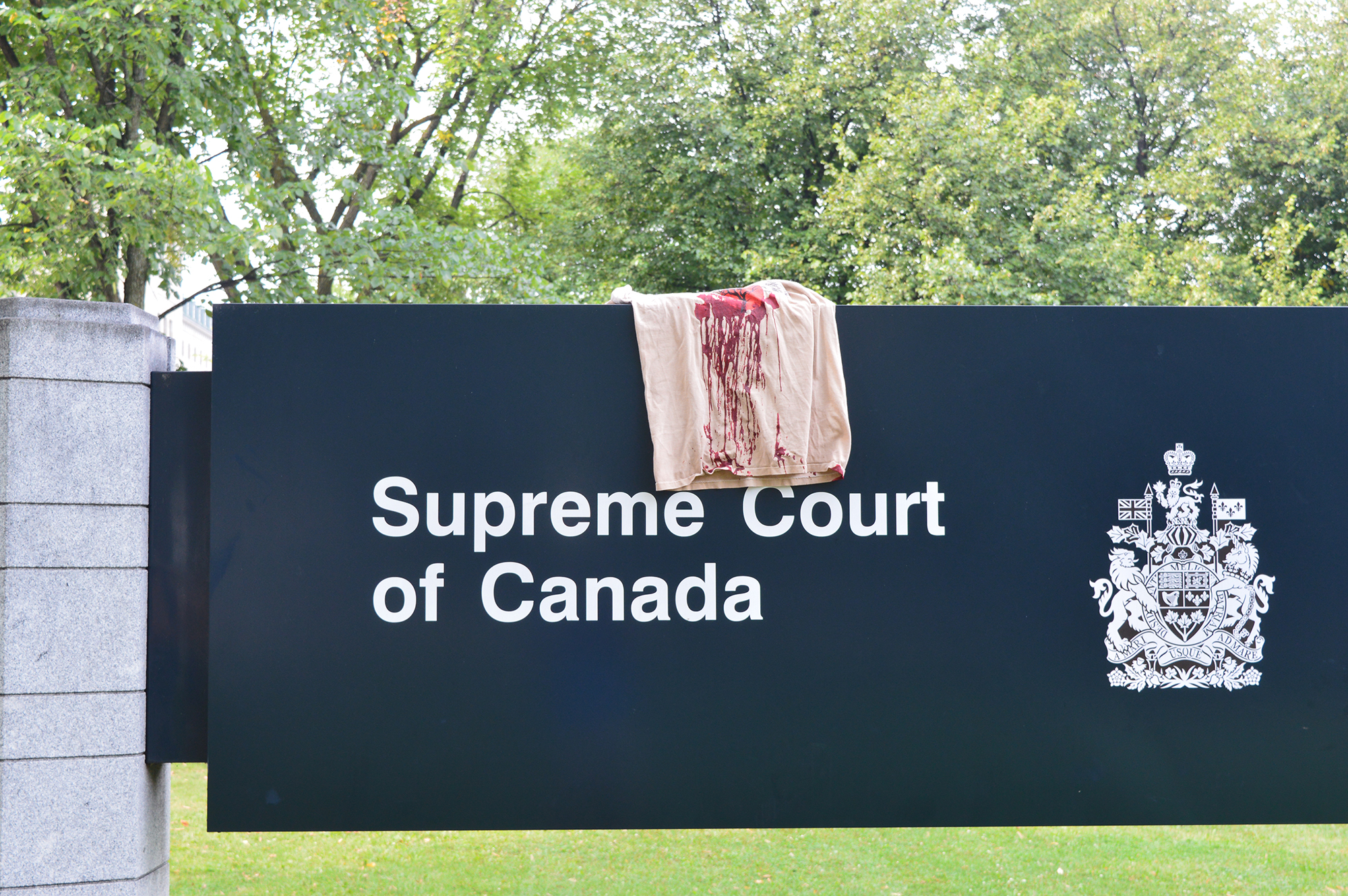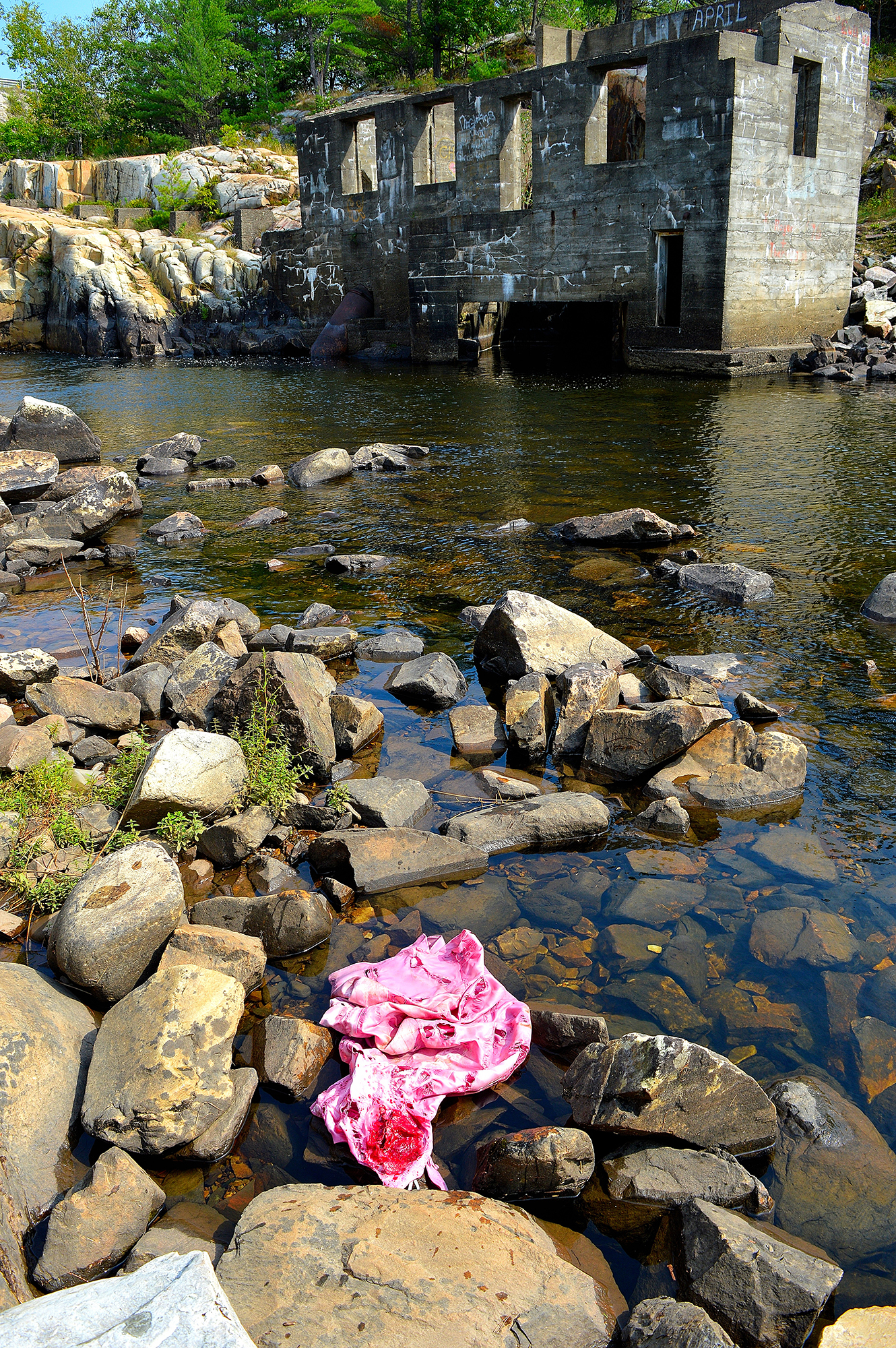Mine is but a tear in a river
Tracey-Mae Chambers, Simcoe (ON, Canada)
At the beginning of my short history as an artist I was driven by love for colours and textures. Then I felt compelled to speak about the consuming issue of negative body image. Through all of the stages I have gone through I felt obligated to play nice, to get along and say what I had to say quietly or even easier still-create work that said nothing at all.
After a two week residency in May 2015 among like-minded women I have come to feel energized and confident enough to confront and create work regarding uncomfortable facts. Make no mistake, there exists a war upon women. Not only in faraway countries whose religions and customs are foreign to us. Not just in the locales we gain familiarity with only off the spoon of the media that feed us. It is here. It is now.
I feel assaulted after listening to the media stories which judge, vilify and further victimize Aboriginal women. This is not just the opinion of the media, I have heard words spoken about these women that feel like shards of glass underfoot. There is no way to walk safely or softly upon them. There is no way to unsay them once they are uttered.
It is not only about educating our young men how to be kind and respectful as they are not the only culprits in this list of crimes. Every nation on this Mother earth is culpable. Canada is not the exception: it is the rule. We are all to blame. Subsequent to the crime it is not merely enough to hand out apologies and condolences as though they were coupons that have expired.
I feel we must face brutal truths. The work contained within ‘Mine is but a tear in a river’ makes me feel obliged to note that some may find it uncomfortable to view. Sometimes a little discomfort is required. Flesh is a messy business after all.
I incorporate clothing and several small shopping carts which have been painted flat black. The exterior of the clothing has been painted with encaustic to re-create flesh. We wear our clothing to clarify our identity and the threads are then used by forensics to identify us. Our skin is protective, a barrier to the elements while intact and alive. Our flesh underneath the skin has no regard for color or creed. The flesh is the commonality that binds all women together. It is our common denominator and our common commodity. The shopping carts were found in many of the locations around Ontario where the photos were taken. To me they represent how we discard what we consume and it further illustrates Aboriginal women as also disposable.
The placement of the clothing painted with the depiction of flesh is strategic. They are meant to imitate a crime scene from my imagination. They are photographed in places related to residential schools within Canada such as provincial and federal government buildings and churches. They have been placed in abandoned buildings and in the middle of deep forests. Waterways and streets, malls and graveyards.
I have used my own body in these clothes. Further adding to the emotional stress and exhaustion this project has caused. I have laid in ditches, across rail road tracks, on the steps of Parliament hill, on city streets and country roads. On the precipice of cliffs among broken glass and garbage. I have been agonizing in my own skin as I lay in this blood and flesh soaked clothing. I have been a victim of violence. I have been lost. It is heartbreaking to represent this violence in this way but it is necessary.
I don’t want to talk calmly and quietly anymore. I feel no need to justify my work or my opinion concerning how easily Aboriginal women are discarded. It is as though they were never really there in the first place.
The larger exhibition of which the images here are a part features 1,181 photos on transparent 8.5" x 11" pages. Each photo is of a pieces of clothing that has been painted with encaustic paint to replicate the flesh below our skin. As of May 16 2015 the RCMP confirmed there are 1,181 documented cases of missing or murdered Aboriginal women in Canada from over the last three decades. I have taken one photo for each one of these women. Another point for you to ponder, as this show progresses from one venue to another the likelihood that I will have to add photos to the exhibition is ever present.
The completion of the Truth and Reconciliation Commission findings as well as the release of the report from Justice Sinclair illustrate the need for both an inquiry and a viable action plan to address the issue of murdered and missing Aboriginal women. But first, we must reach the Canadian public in order to raise awareness about more than just the statistics. I believe that this terribly visceral representation of the realities of the issue will help to do this. Originally I had named the installation ‘Tears in a river’. But that seemed to be making the assumption that others found the issue as upsetting as I. So, I changed it to reflect that my tears are one in a river of tears. But a river is so much smaller than an ocean. An ocean of tears is what this issue requires.
Bio
Tracey-Mae Chambers is painting/sculpture & installation artist based in Simcoe, Ontario. Committed to art as a vehicle for social change, her work has been featured in solo and group exhibitions throughout Canada. Her current project focused on violence against aboriginal woman has been supported by the Ontario Council of the Arts and the Chalmers Art Fellowship, amongst others.
